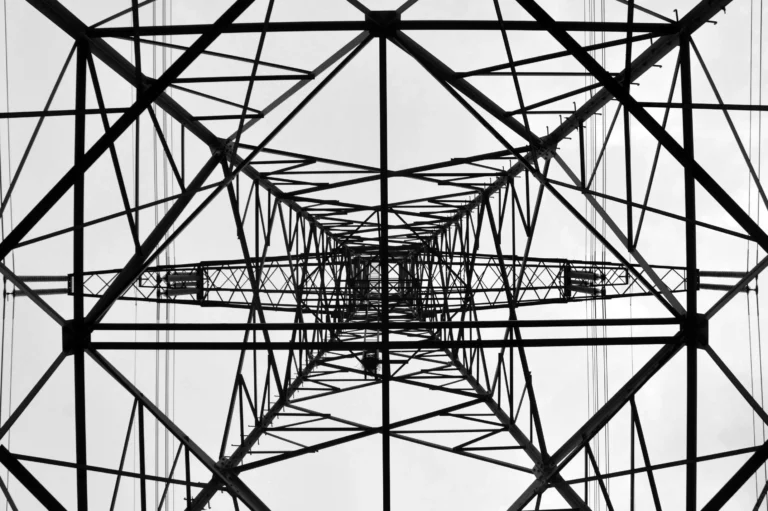MyHEAT
201-1228 Kensington Rd NW
Calgary, AB T2N 3P7
Canada
Heat Pumps in Europe: How The U.S. Can Catch Up
Heat pump adoption in Europe is at an all-time high. What can the United States learn from Europe's energy crisis and green revolution?
European climate action and energy crisis
Europe’s energy crisis is making headlines around the globe. But, thanks to a united approach prioritizing energy efficiency and social justice, efforts toward meeting the continent’s ambitious climate goals are accelerating.
As countries around the globe face inflated energy costs, Europe’s current energy crisis continues to dominate the headlines. After the double threat posed by recent heatwaves and droughts, the continent gets no respite, as Russia increasingly threatens its energy security.
Europe’s precarious position means it has no choice but to act fast. E.U. (European Union) member countries are accelerating divestment from Russian fossil fuels under the REPowerEU plan, while increasing investment in cleaner energy technology.
But Europe was already on this path, having pledged to become the “first climate-neutral continent by 2050” as part of the European Green Deal. Although the U.S.A. boasts greater energy independence than Europe, the Biden administration’s recent actions reflect a similar commitment to mitigating the worst effects of the climate crisis.
Related reading: What Does The Emergency DPA Funding Mean For Heat Pump Sales?
As Europe adopts a wartime mentality towards the multiple challenges it’s facing, what can the U.S.A. learn from these countries at the forefront of the green revolution?
“This European Green Deal and Fit for 55 was already ambitious, but today we’re taking our ambition yet to another level.”
Ursula von der Leyen, President of the European Commission

What climate targets does Europe have?
The European Climate Law commits member countries to cutting net greenhouse gas emissions by at least 55% by 2030, based on 1990 levels. However, the E.U. recognizes that the energy transition may be smoother for some regions than others. Much like the U.S.A., there are some regions which depend heavily on fossil fuels, either as a source of energy for their homes, or to provide jobs for the community.
Between 2021 and 2027, Europe will allocate a minimum of €65-75 billion to the regions and communities most in need of financial support. The funding will be used in part to support communities and people by:
- Combating energy poverty
- Upskilling workers
- Improving home energy efficiency
How heat pumps support home retrofit schemes in Europe
The Energy Performance of Buildings Directive describes the necessary path for Europe’s building stock to be fully decarbonized by 2050.
Under the E.U. Climate Target Plan, the use of fossil fuels in heating and cooling will be phased out by 2040. Financial support for fossil fuel boilers will cease as of 2027. Combined with current high gas prices, this presents a significant opportunity for the scaling up of heat pump installation.
In the U.S.A., heat pumps are still an emerging technology, but they have been popular in Europe for decades. The European heat pump market has shown significant growth since 2015, doubling to 1.6 million sales annually.
Jan Rosenow, a prominent voice on clean energy and Director of European Programs at the Regulatory Assistance Project (RAP) shares an example of a recent surge in heat pump installations in Germany.

How many heat pumps are installed in Europe?
With the number of installed units totalling 16.98 million, heat pumps now represent 14% of the E.U. heating market. Though to meet future climate goals, this figure will need to increase fourfold to 50 million by 2030. According to the European Heat Pump Association (EHPA), this is achievable, thanks to Europe’s current manufacturing capabilities and grid capacity.
“Heat pumps in renovations will lead to enormous reductions of greenhouse gas emissions. The technology is readily available.”
Thomas Nowak, Secretary General of European Heat Pump Association
Significant progress has been made in retrofitting Europe’s industrial buildings, while new residential builds are most often constructed with heat pumps instead of traditional boilers. Meanwhile in the U.S, the Washington Building Code Council will require all new residential buildings to use heat pumps, beginning in July 2023.
The greater challenge lies in retrofitting older, less efficient building stock as every home is different, while the renovations may be cost-prohibitive for the homeowner.
Back in Europe, Italy’s superbonus scheme provides an exceptional example of how to promote residential heat pump uptake. Using funds from the E.U. Green Deal budget, the country has offered tax credits of up to 110% for home efficiency upgrades, including the electrification of heating and cooling systems, and weatherization improvements.
So far, over 120,000 homes have been retrofitted, and true to the promise of every green deal, the scheme has so far created over 150,000 new jobs. Inevitably, with such good press and word of mouth, public interest in energy efficiency has grown.

European countries are focusing on a socially just transition
Germany is one of the countries that has been hit hardest by Russia’s control of fossil fuel supplies. In an emergency response, it has delayed shutting down its nuclear power plants – a decision made after the Fukushima reactor meltdown – by a decade. With space and water heating accounting for almost 30% of the country’s energy consumption, improving building energy efficiency is one of Germany’s most urgent priorities.
Claiming that renovating an existing home is ten times more efficient than building a new one, the country is using a large portion of its Climate and Transformation Fund to target the most poorly performing 25% of buildings.
Ireland’s National Retrofit Plan also provides affordable efficiency upgrades. Its National Home Energy Upgrade Scheme offers grants of up to 50% while offering an end-to-end service to streamline the process for the homeowner.
Like Germany, Ireland is prioritizing the least energy efficient homes, which were either built before 1993 or fall into the lowest energy efficiency rating band. Under the Warmer Homes scheme, rented or privately owned homes with occupants at the greatest risk of energy poverty are eligible for free energy upgrades.
Meanwhile, the Dutch government has developed two incentives aimed at landlords, to help improve the energy performance of their properties. This will help to avoid the split incentive issue, whereby landlords may choose not to invest in energy upgrades, leaving the burden of saving energy as a renter in an inefficient home on the tenant.
These examples are significant as low-income households, including renters, are often shut out of energy efficiency programs thanks to their inability to fund the initial costs.
Related reading: Energy efficiency funding is critical to combat energy poverty. Is Biden’s Justice40 $3.1B enough?
What are Europe’s next steps in its clean energy transition?
As the world increasingly moves towards renewable energy sources, the cost of electricity will decline, making heat pumps even more cost-effective than they already are. What’s more, digitalization and greater flexibility will create greater grid stability, giving the homeowner more choice concerning device use during peak or off-peak times.
Moving forward, grid preparation will be necessary, with the possibility of more community-driven power generation. According to the EHPA, this will lighten the load on energy grids and turn citizens into more active stakeholders.
Continued support for low-income households, as well as clear, informative awareness campaigns, will be vital in driving retrofitting uptake. As demand increases, sufficient training and upskilling is required to meet it. Meanwhile, continued investment in R&D will ensure that heat pumps become increasingly efficient.
The European Union is aiming for all buildings to be zero emissions by 2050. With a heat pump and appropriate home retrofits, these buildings could even be energy positive, ushering in a new era of energy efficiency and increased homeowner savings.
How can the U.S accelerate heat pump adoption?
Across many U.S states, there are rebates for energy efficiency upgrades offered by most utility companies, some of which help reduce the upfront cost of installing a heat pump. But improving customer adoption of such programs is one of energy efficiency’s biggest challenges.
Using unique and personalized aerial heat loss imagery of individual homes and buildings, MyHEAT’s Heat Loss Maps help utilities (and other organizations) engage homeowners in a new way.
When energy consumers can see and compare their home’s heat loss, they’re motivated to take energy-saving action. In recent projects, our utility partners have been able to increase participation in weatherization and heat pump programs by up to 28%.
Curious to learn more? We’d love to talk.
Written by:


